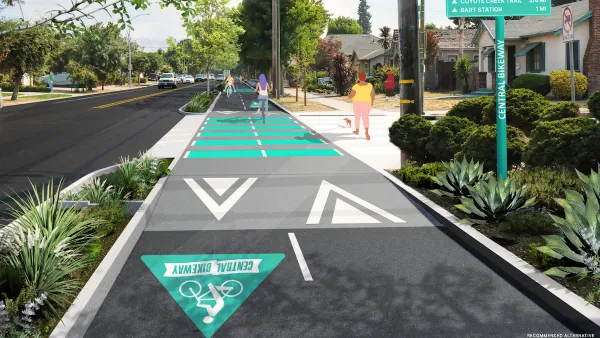The city’s limited land use regulations have kept housing costs relatively low, but government intervention is still needed to provide housing to the lowest-income residents.

Writing in Market Urbanism, Emily Hamilton assesses how Houston has maintained its housing affordability relative to peer cities and how city leaders can limit cost increases and provide housing options for its lowest-income residents.
According to Hamilton, Houston’s existing building regulations—many of which mimic other cities’ zoning codes—increase the cost of construction, but the city is a leader in reducing restrictive rules, leading to lower housing costs than in many other regions.
“At the least-well-off end of the income spectrum, Houston has the lowest rate of homelessness among major U.S. cities, due in part to its relative abundance of housing and in part to well-administered public and nonprofit services for formerly homeless residents.” Houston has taken a ‘housing first’ approach that has helped the city dramatically reduce chronic homelessness.
Hamilton points out that “While Houston is a model of relative affordability, its housing market cannot serve its least-well-off residents without aid.” Hamilton writes that the Housing Choice Voucher program can help low-income families access housing and is more cost-effective than subsidizing new construction or ‘inclusionary zoning’ requirements which, according to her research, “provides a very small number of units relative to the number of households that qualify for them” and can raise the median cost of housing.
FULL STORY: Houston as an Affordability Model

Planetizen Federal Action Tracker
A weekly monitor of how Trump’s orders and actions are impacting planners and planning in America.

Silicon Valley ‘Bike Superhighway’ Awarded $14M State Grant
A Caltrans grant brings the 10-mile Central Bikeway project connecting Santa Clara and East San Jose closer to fruition.

Amtrak Cutting Jobs, Funding to High-Speed Rail
The agency plans to cut 10 percent of its workforce and has confirmed it will not fund new high-speed rail projects.

Tesla Announced Human-Assisted Robotaxi Launch in San Francisco — But State Regulators Say Otherwise
The electric carmaker appears to be both-sides-ing its impending launch, telling regulators it will have human drivers on board while touting the project as ‘robotaxis’ to investors.

Indianapolis Encourages Tactical Urbanism With Lending Library, Grant Program
Residents can apply to receive assistance with traffic calming projects that can provide valuable data and lead to permanent changes.

Jacksonville Completes Park Street Road Diet
The half-mile corridor now features new bike lanes and sidewalks, as well as roundabouts and new landscaping.
Urban Design for Planners 1: Software Tools
This six-course series explores essential urban design concepts using open source software and equips planners with the tools they need to participate fully in the urban design process.
Planning for Universal Design
Learn the tools for implementing Universal Design in planning regulations.
Yukon Government
Caltrans
New Jersey Institute of Technology
Mpact (founded as Rail~Volution)
City of Camden Redevelopment Agency
City of Norman, Oklahoma
City of Portland
City of Laramie





























